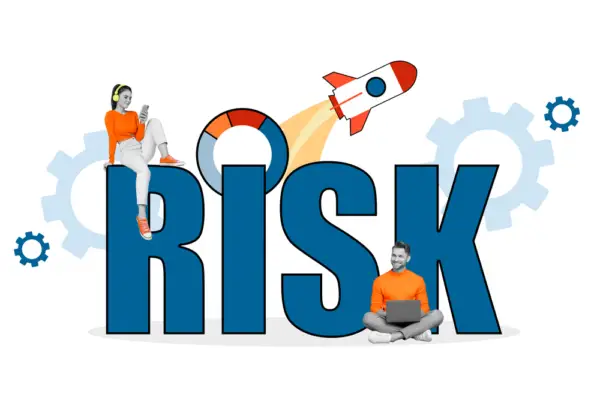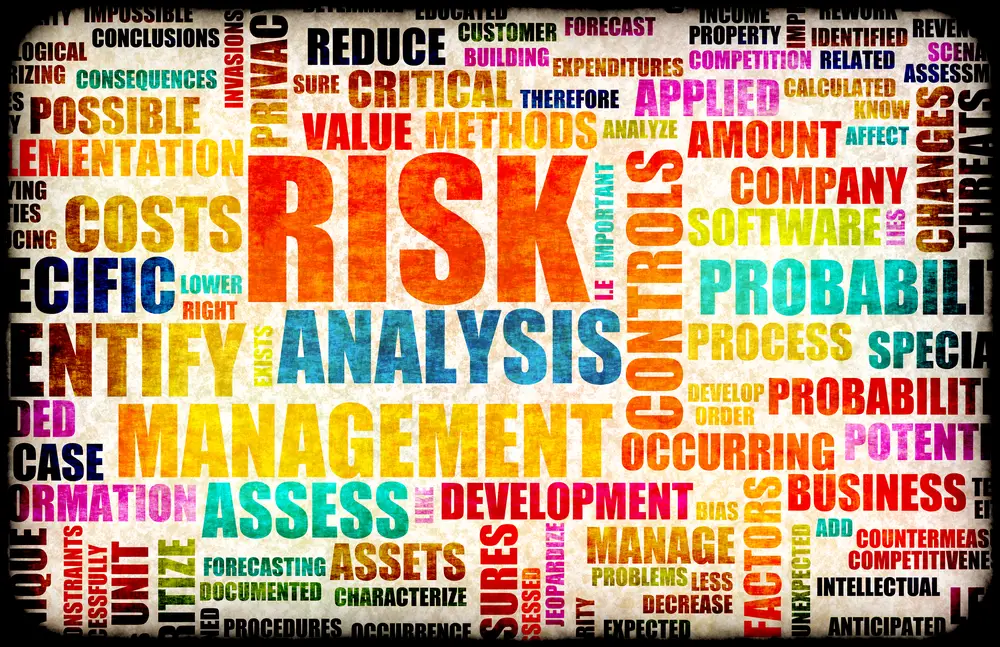Construction Schedule Risk Analysis Software analyses risks and uncertainties in project schedules using Monte Carlo simulations by the project team. This type of software allows project managers to account for uncertain variables in project schedules.
It also estimates the uncertainty in activity durations and performs a risk analysis to determine the achievability of a schedule. It also helps create a project risk management plan, linking schedule risk to cost risk and combining advanced project schedule risk and cost risk analysis for greater insight.
Construction projects are prone to numerous risks. One of the most difficult challenges for construction managers is predicting how these risks will impact the project timeline through probability distributions.
To make project end date help them manage this risk, many companies have adopted construction schedule risk analysis software. Project managers will understand the project completion date.
In today’s fast-paced and complex construction industry, managing project timelines and mitigating schedule risks are of utmost importance to ensure successful project completion. Enter Construction Schedule Risk Analysis Software is a cutting-edge solution designed to streamline identifying, assessing, and managing potential risks that could impact a construction and project manager’s timeline.
Through leveraging advanced algorithms and data-driven insights, this software enables project managers and stakeholders to make informed decisions about project outcomes, allocate resources efficiently, and proactively address potential issues before they escalate.
In this article, we will delve into the world of Construction Schedule Risk Analysis Software, exploring its features, benefits, and how it can revolutionize the way construction projects are planned and executed.
What Does it Do?
Construction schedule risk analysis software is used to identify and analyze risks associated with project schedules. It uses Monte Carlo simulations to assess the probability of meeting a project’s goals, taking into account any uncertainties in activity durations. This type of software can also be used to estimate the cost of potential risks, as well as develop strategies for mitigating them.
The various types of construction schedule risk analysis software available include RiskyProject by Intaver Institute, Full Monte Schedule Risk Analysis by Barbecana, Tamara Project Risk Analysis Software by Vose Software, SRA (Schedule Risk Analysis) by Palisade Corporation, and RiskMP by RiskMP.
Each one offers different features and capabilities that can help you manage your project’s risks more effectively. For example, some offer advanced project schedule risk and cost risk analysis tools that provide greater insight into potential risks and their impact on the project timeline. Other solutions like Deltek Acumen Risk and 360 enable users to link schedule risk to their cost and schedule estimates for better decision-making.
Overall, construction schedule risk analysis software helps you plan and manage projects more efficiently while minimizing potential risks. By using this type of software, you can ensure that your projects are completed on time and within budget.
Construction schedule risk analysis software helps construction managers identify potential problems and delays in their projects before they happen. This allows managers to make informed decisions about their project timelines in order to maximize efficiency and minimize costs.
The primary function of construction schedule risk analysis software is to provide a comprehensive and data-driven overview of potential risks associated with a project’s timeline. This includes analyzing factors such as weather conditions, material availability, labor productivity, equipment reliability, subcontractor performance, and regulatory compliance, among others.
Through simulating different scenarios and outcomes, the software helps managers better understand the likelihood and impact of each risk, allowing them to prioritize and address the most critical issues.
Furthermore, this software supports continuous monitoring and updating of the project’s progress and risk profile. As construction projects often involve complex and dynamic processes, having real-time insights allows managers to make timely adjustments and informed decisions in response to evolving circumstances.
This adaptability is crucial for maintaining project efficiency and minimizing potential cost overruns caused by unforeseen delays or complications.
Another key benefit of using construction schedule risk analysis software is its ability to facilitate effective communication and collaboration among project stakeholders. By providing a shared platform for tracking risks, tasks, and progress, the software enables all team members to stay informed and aligned on project goals and expectations.
This transparency promotes accountability, encourages proactive problem-solving, and fosters a culture of risk awareness within the organization.
In summary, construction schedule risk analysis software is a valuable tool that empowers construction managers to proactively identify, assess, and address potential problems and delays in their projects.
Additionally, the software promotes collaboration and risk awareness among project stakeholders, fostering a proactive approach to risk management in the construction industry.
How Does it Work?
Construction schedule risk analysis software generally uses algorithms and advanced analytics to analyze various aspects of a construction project. It looks at factors such as labor costs, materials availability, weather conditions, equipment availability, subcontractor performance, and so on.
Once all of this information is collected and analyzed, the software can generate reports that provide insight into which areas are at risk for causing delays or cost overruns. This information helps managers identify problem areas early on so that corrective measures can be taken before the issue spirals out of control.
Benefits of Using Construction Schedule Risk Analysis Software
Using construction schedule risk analysis software has numerous benefits for construction teams. For starters, it provides a comprehensive view of all potential risks associated with a project so that managers can make informed decisions about their timelines.
Additionally, by using an automated system instead of manual methods like spreadsheets or paper documents, teams can save time and money while also reducing errors due to the manual inputting of data.
Finally, having access to detailed reports generated by the software gives teams greater visibility into where resources are being used so that they can optimize their processes for maximum efficiency and profitability.

What is schedule risk in construction?
Schedule risk in construction refers to the potential for a project to experience delays, disruptions, or extensions in its planned timeline. These risks can arise from various factors, including unforeseen events, poor planning,
inadequate resource allocation, or changes in the project’s scope. When not properly managed, schedule delays and risks can lead to increased costs, conflicts among stakeholders, and a negative impact on a project’s overall success.
Construction projects are often very complex projects, involving multiple tasks, resources, and stakeholders, making them susceptible to schedule risks. Effective project management and risk mitigation strategies, such as
continuous monitoring project scheduling, contingency planning, and clear communication among stakeholders are essential in minimizing the impact of schedule risks and ensuring the timely completion of construction projects.
What is a risk analysis in construction?
Risk analysis in construction is the process of evaluating and implementing procedures to reduce the impact of risks in construction projects. It involves identifying potential risks, assessing their likelihood and severity, and taking steps to mitigate them.
Risk analysis helps to ensure that a project is completed on time and within budget, as well as reducing the potential for accidents or other issues that could delay or disrupt the project network progress.
A risk assessment aims to identify dangerous factors in construction projects. This includes measuring the possibility of a specific risk event and its potential impact on the project.
Qualitative risk analysis is done on all risks and for all projects, which involves assigning numerical values to each risk factor in order to determine its overall level of danger.
Once identified, there are several steps that can be taken to manage these risks. These include developing contingency plans for unexpected events, implementing safety protocols and training staff on handling hazardous situations, managing risk, and ensuring proper insurance coverage is in place.
Risk analysis is frequently ignored as part of project planning. In some cases, it helps to forecast possible delays before they occur to ensure successful execution. This article will be helpful to all project managers in understanding what risk analyses can accomplish on schedule.
How do you conduct a schedule risk analysis?
The first step in conducting a schedule risk analysis is to create an Integrated Master Schedule (IMS). This includes all tasks, milestones, and deliverables required for the successful completion of the project.
Once this has been established, it is important to identify any potential risks that could affect the timeline or quality of the project. These can include external factors such as weather conditions or internal factors such as staff availability or budget constraints.
Once these risks have been identified, they should be evaluated in terms of their likelihood and impact on the project timeline. This will help to prioritize which risks need to be addressed first and how they should be managed.
The next step is to use a statistical simulation technique such as Monte Carlo analysis to quantify the uncertainty associated with each task, project duration, and program risk factor. This will provide an estimate of how likely it is that the project will meet its defined goals within its established timeline.
Finally, reviewing and adjusting the IMS based on these results is important to the project outcome to ensure that it remains achievable given all identified risks. Regularly monitoring progress against this adjusted IMS ensures that your project stays on track and meets its desired outcomes within its established timeline.
Schedule Risk Assessment and Analysis
Developing a realistic plan minimizes risk. How Critical Path Scheduling is very optimal can be found in PP: The factors determining the CPM toward an initial assessment are defined and analyzed. P: Getting a good grasp basic understanding of PERT.
It may be the most efficient and least accurate method for model uncertainty. The article explains the origin of the PERT system and why. How is a probability calculated? A quick view on the the probability distribution of the schedule completion (read further on probability).
Why Perform Schedule Risk Analysis?
Planning involves predicting the future; therefore, nothing is absolutely certain; however, ordinary scheduling software does not allow this. The planner tool described as deterministic is determined through the selection of a set of parameters corresponding to a specific schedule date.
The software is also unable to model risk events – events that could not occur but could affect the timing of the schedules of the project in any instance. The plan must therefore decide whether to exclude risk events from its calendar.

Conclusion
Construction schedule risk analysis software offers numerous advantages for construction teams looking to improve their processes and minimize costs associated with delays or cost overruns. By providing a comprehensive view of potential risks associated with a project as well as detailed reports generated from data-driven analytics algorithms,
this technology allows teams to make informed decisions about their timelines while also increasing efficiency through automation. Ultimately, incorporating this type of technology into your workflow is an investment worth making if you want your projects to run smoothly without any costly surprises down the line.

Chris Ekai is a Risk Management expert with over 10 years of experience in the field. He has a Master’s(MSc) degree in Risk Management from University of Portsmouth and is a CPA and Finance professional. He currently works as a Content Manager at Risk Publishing, writing about Enterprise Risk Management, Business Continuity Management and Project Management.


